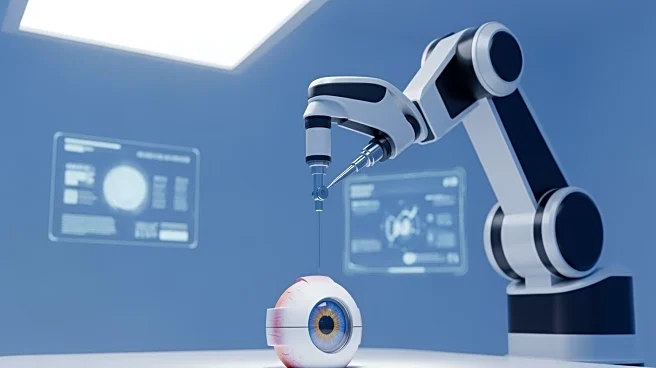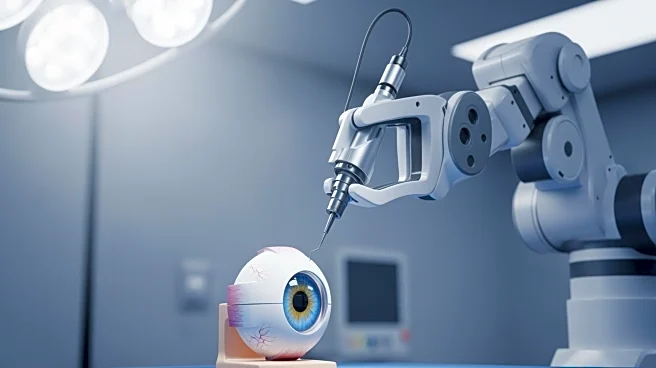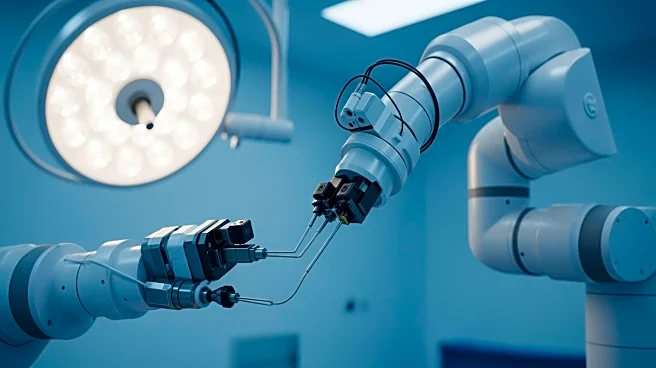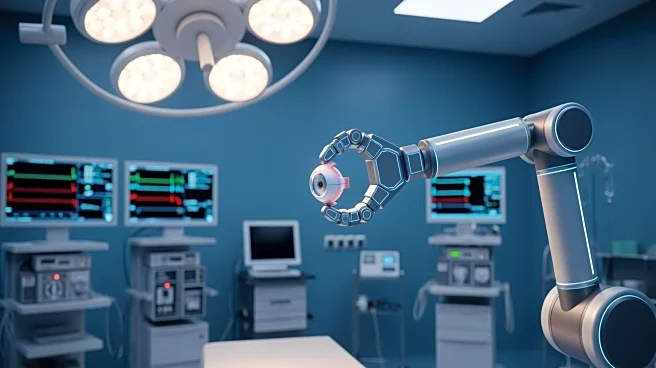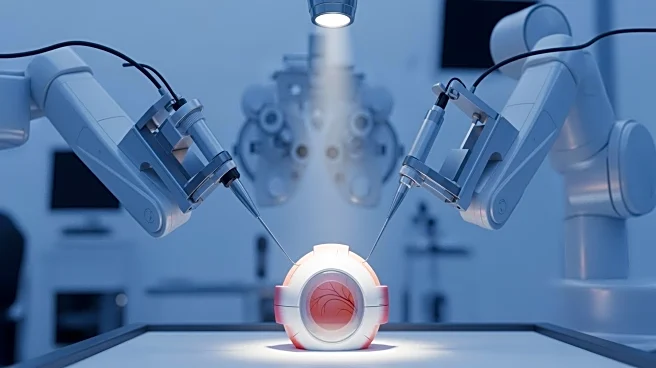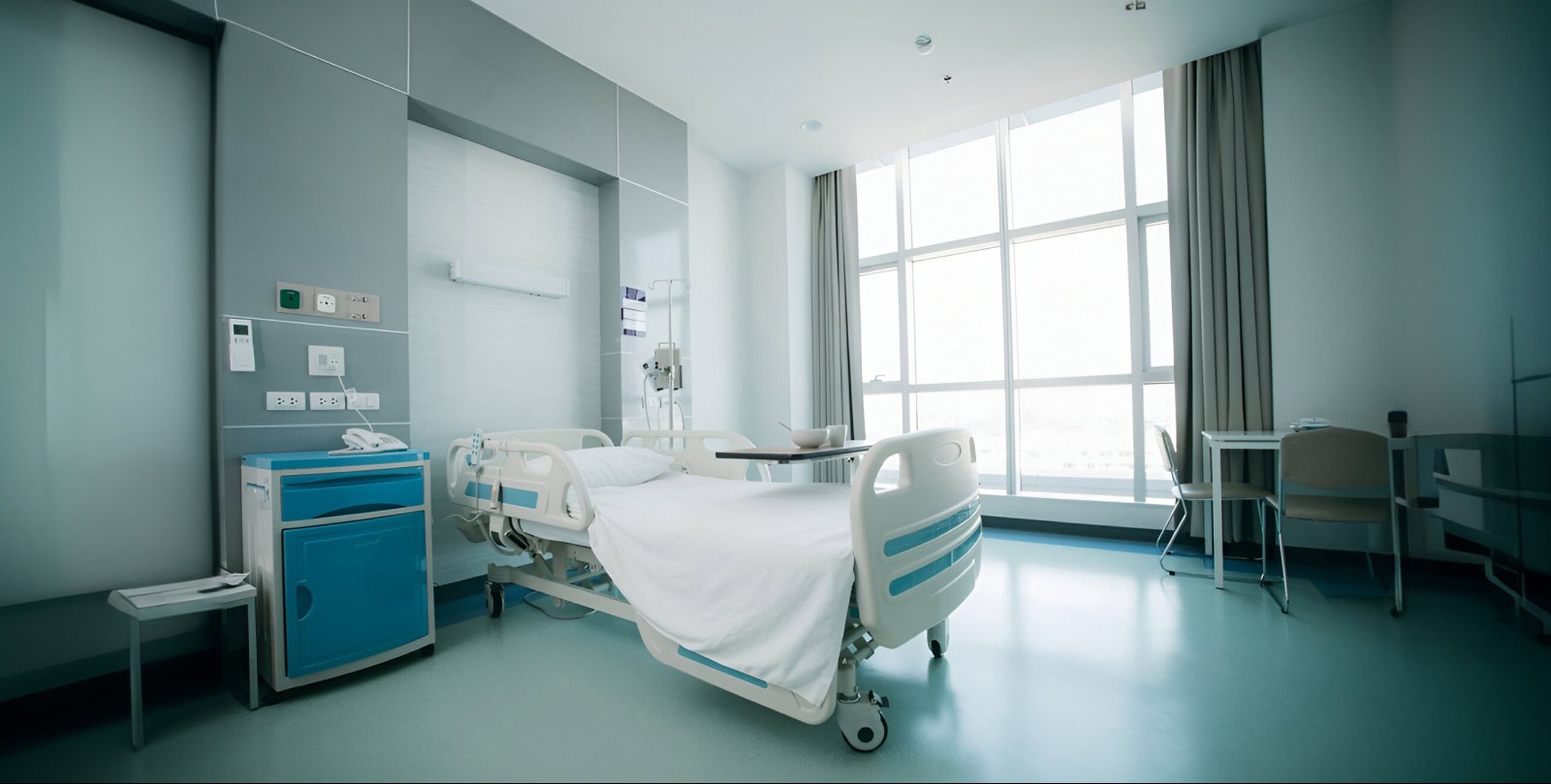What's Happening?
A new robot capable of delivering precise injections with 15-micrometer accuracy has been developed, aimed at improving surgical outcomes in ophthalmology. The robot, a collaboration between researchers
and a Japanese manufacturing company, uses optical coherence tomography to track involuntary eye movements during surgery. This technology allows for drug administration with minimal deviation, reducing the risk of complications such as inflammation. The TUM Clinic has been instrumental in the robot's development, with further trials planned on animal models before human clinical trials commence.
Why It's Important?
The development of this precision robot represents a significant advancement in medical technology, particularly in the field of ophthalmology. By enhancing the accuracy of drug delivery, the robot could improve patient outcomes and reduce the incidence of post-surgical complications. This innovation also underscores the potential of robotics in healthcare, offering new tools for medical professionals to perform complex procedures with greater precision. As the technology progresses, it could lead to broader applications in other areas of microsurgery, potentially transforming surgical practices.
What's Next?
The next phase involves testing the robot on the eyes of deceased pigs, followed by live animal trials in early 2026. Human clinical trials are anticipated in the coming years, contingent on the success of these preliminary tests. The project, supported by significant funding from the Federal Ministry of Research, Technology, and Space, aims to develop a modular, AI-supported platform for robot-assisted microsurgery. The outcomes of these trials will determine the robot's readiness for clinical use and its potential impact on surgical practices.
